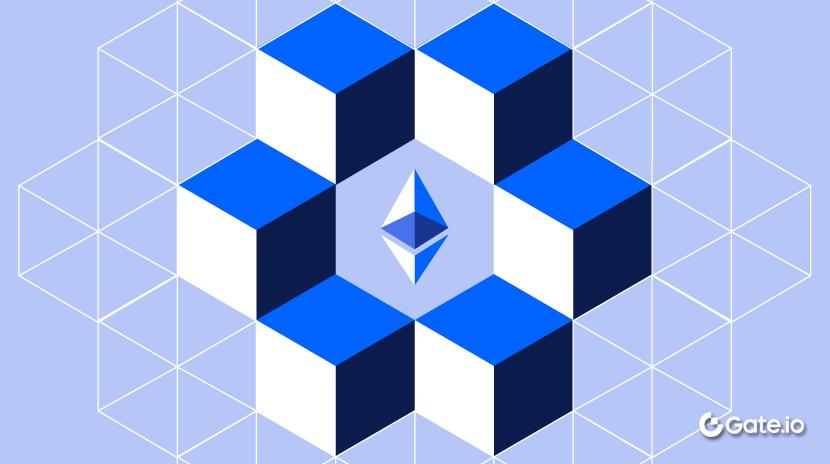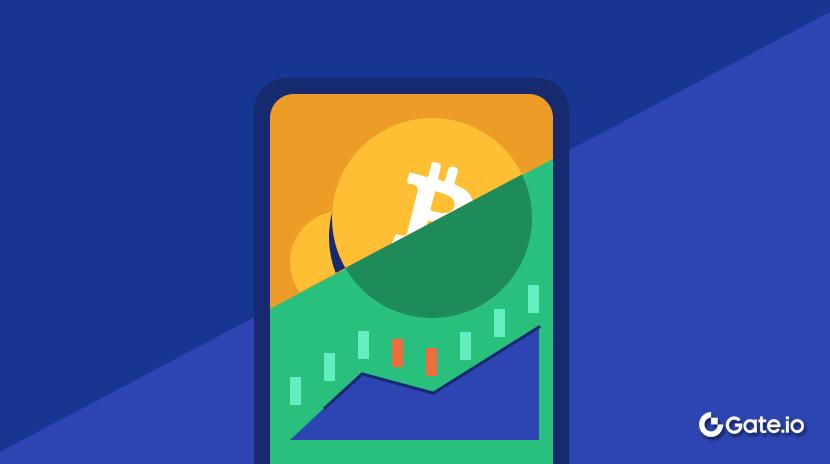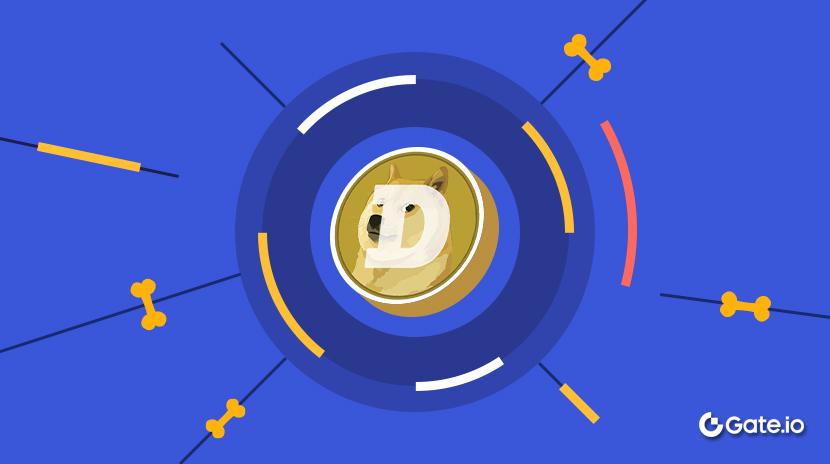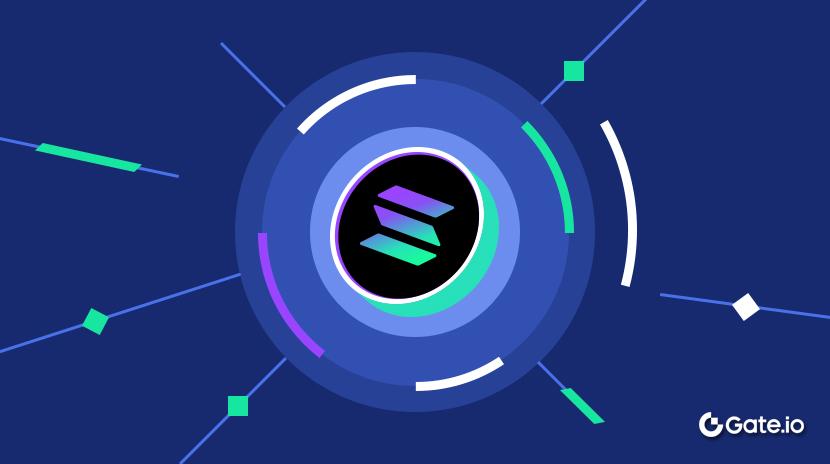Pesquisa Gate: Fornecimento de Ethereum na CEX cai para o nível mais baixo desde 2015; Pump.fun lança DEX nativa 'PumpSwap'
Abstrato
- Bitcoin cai 1.62% para $84,621, Ethereum cai 2.67% para $1,982.
- O fornecimento circulante de curto prazo do Bitcoin cai mais de 50%, as entradas nas exchanges diminuem 54%.
- O fornecimento de Ethereum nas exchanges centralizadas cai para 8,97 milhões de eth.
- Tether torna-se um dos sete principais detentores do tesouro dos EUA, ultrapassando Hong Kong e Canadá.
- Pump.fun lança dex nativo 'PumpSwap'.
- SEC esclarece posição sobre mineração pow: não considerada emissão de títulos.
- Departamento de Terras de Dubai lança projeto de tokenização imobiliária.
Análise de mercado
- BTC- O preço do BTC caiu 1,62% nas últimas 24 horas, sendo negociado atualmente a $84.621. O BTC permanece dentro de um canal ascendente, com flutuações de preço ocorrendo dentro do canal, mantendo uma tendência geral de alta. Um suporte de curto prazo se formou em torno de $83.600. O volume de negociação mostrou sinais de aumento durante a alta de preços, indicando que os touros têm uma leve vantagem.[1]

- Ether- O preço do Ethereum caiu 2,67% nas últimas 24 horas, atualmente em $1.982. O ETH está sendo negociado dentro de uma faixa de consolidação, com resistência em torno de $2.070 e suporte em torno de $1.950. O volume foi fraco durante a recuperação do suporte, e o ETH está prestes a romper abaixo da sua média móvel, sugerindo um momento de baixa a curto prazo.

- ETF- De acordo com SoSoValue, em 20 de março, os ETFs de Bitcoin à vista dos EUA registraram uma saída líquida de $6.39 milhões, enquanto os ETFs de Ethereum à vista viram uma saída líquida de $3.45 milhões. (Dados até 21 de março, 11:00 AM UTC+8.)
- Altcoins- Setores como Tokens de Stake Líquido, Oracle e tokens CEX viram mudanças respectivas de +7,0%, +6,1% e +1,2%, respectivamente.[5]
- Índices do Mercado de Ações dos EUA- Em 20 de março, o S&P 500 caiu 0,22%, o Dow Jones caiu 0,03% e o Nasdaq caiu 0,33%.[6]
- Ouro à vistaOs preços do ouro à vista ficaram em $3.043,72 por onça, uma queda de 0,03% no dia. (Dados até 21 de março, 11:00 AM UTC+8.)[7]
- Índice de Medo e Ganância- O índice está em 46, indicando que o mercado está em um estado de medo.[8]
Melhores Desempenhos
De acordo com os dados de mercado da Gate.io[9], com base no volume de negociação e no desempenho de preços nas últimas 24 horas, as altcoins com melhor desempenho são as seguintes:

BR (Rocha Matriz) - Como um token recém-lançado, BR viu um aumento de aproximadamente 1.553,9% em um único dia, com um limite de mercado circulante de $33,24 milhões.
O token BR é o token nativo do Bedrock DeFi. Bedrock é um protocolo focado no restaking de Ethereum (ETH) e Bitcoin (BTC), com o objetivo de fornecer um equilíbrio entre liquidez e retornos maximizados por meio de seu inovador mecanismo PoSL. O fornecimento total é de 1 bilhão de tokens, com 5% alocados para o airdrop inicial a um preço de $0.025.
Um dos catalisadores diretos para o aumento da BR foi sua listagem simultânea em várias das principais exchanges. Entre elas, a Gate.io foi a primeira a listar a Bedrock (BR) e lançou a campanha HODLer Airdrop. Os usuários que possuíam 1 GT puderam participar da reivindicação do airdrop, compartilhando um total de 960.000 tokens BR.
BONE (Bone ShibaSwap) - Aumento de cerca de 41,54% em um único dia, com uma capitalização de mercado circulante de $82,89 milhões.
BONE é o token de governança da exchange descentralizada ShibaSwap, com funcionalidade de votação. BONE dá à comunidade Shiba Inu o direito de participar da tomada de decisões da plataforma, incluindo votação, envio de propostas e acesso a futuros NFTs. Usuários que possuem mais tokens BONE têm maior poder de voto. [11]
Recentemente, Shiba Inu anunciou oficialmente que sua comunidade, ShibArmy, atingiu 1,5 milhão de membros, uma notícia que atraiu a atenção do mercado. O anúncio oficial e as atividades de celebração da comunidade desencadearam um sentimento de mercado positivo, impulsionando o aumento do preço.
L3 (Camada 3) - Aumento de aproximadamente 57,74% em um único dia, com uma capitalização de mercado circulante de $51,39 milhões.
A Layer3 é um ecossistema de infraestrutura omnichain focado em distribuição, identidade e mecanismos de incentivo. O principal objetivo da Fundação Layer3 é promover a governança liderada pela comunidade do protocolo Layer3 e apoiar o desenvolvimento e a adoção do ecossistema Layer3. [12]
Recentemente, a equipe oficial anunciou que a Layer3 será lançada em breve. A versão v3 promete melhorar a experiência do usuário, oferecendo mais diversão, recompensas e métodos de participação, além de aprimorar a utilidade do token L3. Essas expectativas positivas para a próxima versão impulsionaram o aumento do preço do token L3.
Destaques de dados
O fornecimento circulante de curto prazo do Bitcoin cai mais de 50%, com as entradas médias diárias de câmbio reduzidas em 54%
De acordo com os dados da Glassnode, nos últimos 3 meses, a 'hot supply' do Bitcoin (BTC mantido por não mais de 1 semana) caiu de 5,9% para 2,8% da oferta circulante, uma queda de mais de 50%. Ao mesmo tempo, a entrada média diária de BTC nas exchanges diminuiu de 58.600 BTC para 26.900 BTC, uma queda de 54% ano a ano. Essas mudanças indicam uma redução na atividade de negociação de curto prazo, com a liquidez do mercado enfrentando desafios.
A queda no Bitcoin "hot supply" e entradas em exchanges é impulsionada por múltiplos fatores: desde janeiro de 2025, a fraca demanda de mercado tem restringido a acumulação de capital. Detentores de curto prazo, enfrentando perdas, têm vendido em pânico, fazendo com que o indicador SOPR caia abaixo de 1, semelhante ao crash de mercado em agosto de 2024. Quando o preço caiu abaixo de $92,000, houve uma falta de ordens de compra em níveis mais baixos, refletindo uma queda no apetite de risco dos investidores. Além disso, incertezas macroeconômicas como o incidente de hacking da Bybit e a crescente tensão tarifária dos EUA têm limitado novas entradas de capital, transformando o mercado em uma saída líquida de capital. Além disso, a base de custo para detenções entre 1 semana e 1 mês é menor do que a de detenções entre 1 e 3 meses, refletindo uma pressão crescente de venda a curto prazo. Em 12 de março, a intensidade de venda disparou para -12.8K dias de moeda por hora, sinalizando uma onda de intensa venda de pânico em todo o mercado.

Fornecimento de Ethereum na CEX cai para 8,97 milhões
A quantidade de Ethereum atualmente disponível para negociação em exchanges centralizadas (CEX) caiu para 8,97 milhões, marcando o nível mais baixo desde novembro de 2015. Essa queda é impulsionada não apenas pela crescente demanda por DeFi e staking, mas também por recentes incidentes de segurança relacionados a CEX que desencadearam uma saída de fundos dos usuários.
Dados de mercado mostram que um número crescente de detentores de Ethereum prefere transferir ativos para protocolos DeFi ou se envolver em staking para obter retornos a longo prazo e reduzir os riscos potenciais de plataformas centralizadas. A contínua queda no fornecimento de ETH é geralmente vista como um sinal de alta, pois pode reduzir a pressão de venda no mercado e impulsionar os preços para cima quando a demanda aumenta. Também reflete uma tendência crescente entre os investidores para a manutenção a longo prazo e a participação no desenvolvimento do ecossistema. [14]
Tether está entre os sete principais detentores do Tesouro dos EUA, superando Hong Kong e Canadá
Em 2024, a Tether tornou-se o sétimo maior detentor de títulos do Tesouro dos EUA, com um total de ativos atingindo US$33,1 bilhões - ultrapassando países como Canadá, Taiwan, México, Noruega, Hong Kong, Coreia do Sul, Alemanha e Arábia Saudita. O CEO da Tether, Paolo Ardoino, afirmou que embora jurisdições como Ilhas Cayman, França e Luxemburgo detenham mais títulos do Tesouro, esses geralmente representam múltiplos fundos de hedge, enquanto os ativos da Tether pertencem a uma única entidade.
A Tether utiliza os Tesouros dos EUA como um componente essencial das suas reservas de USDT, o que não só fortalece a estabilidade e a liquidez do USDT, mas também aprofunda a influência da Tether no sistema financeiro global. De acordo com o relatório de reservas do 4º trimestre de 2024, as participações totais da Tether em Tesouros dos EUA atingiram US$94 bilhões, destacando a sua dominância no mercado de stablecoins.

Análise em Destaque
Pump.fun Lança PumpSwap DEX Nativo
Em 12 de março, a intensidade de venda da popular moeda meme baseada em Solana atingiu -12,8K moedas-dia por hora, sinalizando uma onda de vendas de pânico intensas no mercado. A Pump.fun anunciou o lançamento de sua exchange descentralizada nativa, PumpSwap, com o objetivo de proporcionar uma experiência de negociação mais suave e eficiente para os usuários. Imediatamente, todos os tokens lançados via emissão de curva vinculada na plataforma serão migrados diretamente para PumpSwap, permitindo que os usuários desfrutem de migração instantânea e zero taxas (abaixo das anteriores 6 SOL).
Construído na Solana, o PumpSwap adota um modelo de Constant Product Automated Market Maker (CPAMM), semelhante ao Raydium V4 e Uniswap V2. Os usuários podem criar livremente pools de liquidez, adicionar liquidez às existentes e negociar qualquer token listado no PumpSwap. Atualmente, cada transação incorre em uma taxa de 0,25%, distribuída como 0,20% para fornecedores de liquidez e 0,05% para o protocolo. No futuro, com a introdução de um mecanismo de compartilhamento de receitas para criadores, essa alocação será ajustada para incentivar melhor o desenvolvimento de projetos de alta qualidade.
O lançamento do PumpSwap marca uma grande atualização para o ecossistema Pump.fun. Além de aprimorar a eficiência de negociação e reduzir as barreiras de entrada, o PumpSwap também tem como objetivo construir um ambiente de negociação descentralizado mais justo e transparente. No entanto, apesar do projeto passar por várias rodadas de auditorias de segurança, os usuários devem permanecer atentos aos riscos associados aos contratos inteligentes e realizar uma pesquisa minuciosa antes de negociar.
SEC Esclarece Posição Regulatória sobre Atividades de Mineração PoW: Não Consideradas Emissão de Títulos
A Comissão de Valores Mobiliários dos EUA (SEC) divulgou um comunicado esclarecendo sua posição regulatória sobre as atividades de mineração de Prova de Trabalho (PoW). A SEC determinou que a mineração PoW não constitui uma oferta ou venda de títulos. Como resultado, os mineradores não são obrigados a registrar suas atividades sob a Lei de Valores Mobiliários, nem estão sujeitos às suas disposições de isenção.
De acordo com a SEC, quer seja realizado por mineradores individuais ou pools de mineração, essas atividades são consideradas de natureza administrativa ou operacional, em vez de atividades orientadas para o lucro que dependem dos esforços gerenciais ou empreendedores de terceiros. Consequentemente, elas não atendem à definição de um “contrato de investimento” sob o Teste de Howey.
A SEC enfatizou que os ganhos dos mineradores em redes PoW são determinados pela potência de computação e recursos que contribuem individualmente, não pela gestão ou tomada de decisões de terceiros - uma característica que permanece verdadeira mesmo dentro de pools de mineração. Portanto, a SEC considera as atividades de mineração PoW fora do escopo de transações de títulos e não sujeitas a regulamentação nos termos da Lei de Valores Mobiliários.[17]
Esta clarificação fornece um sinal positivo para o ecossistema de PoW, removendo a incerteza regulatória. Os mineradores de PoW e os operadores de pool de mineração podem continuar suas operações com maior confiança e menos preocupações de conformidade. No entanto, a declaração da SEC se aplica estritamente à mineração em nível de protocolo sob o mecanismo de PoW e não aborda outros mecanismos de consenso ou a classificação de ativos cripto específicos como títulos.
Departamento de Terras de Dubai Lança Projeto de Tokenização Imobiliária
O Departamento de Terras de Dubai (DLD), a entidade governamental responsável pela gestão imobiliária em Dubai, lançou um projeto piloto para tokenizar ativos imobiliários na blockchain. Esta iniciativa está sendo realizada em colaboração com a Fundação Dubai Future (DFF) e a Autoridade Reguladora de Ativos Virtuais de Dubai (VARA), o órgão regulador de criptomoedas da cidade.
Com essa emissão tokenizada, a DLD se torna a primeira autoridade de registro de imóveis dos Emirados Árabes Unidos a implementar a tokenização de escrituras de propriedade. Em seu comunicado oficial, a DLD observou que a iniciativa deverá acelerar o desenvolvimento do setor de tokenização imobiliária. O governo prevê que até 2033, o valor de mercado dos imóveis tokenizados em Dubai poderá exceder US$ 16 bilhões, representando 7% do total de transações imobiliárias.
Este piloto está alinhado com a visão mais ampla de Dubai de se tornar uma cidade inteligente e um centro global de blockchain. Espera-se que atraia empresas de tecnologia e investidores, aprimore o status de Dubai como um centro de inovação e aumente o volume de transações e a receita ao atrair tanto investidores internacionais quanto varejistas.
Em parceria com a VARA, o projeto também visa estabelecer um quadro regulamentar e fortalecer a reputação de Dubai no espaço de ativos virtuais. Para a indústria imobiliária, a tokenização traz maior liquidez, propriedade fracionada e acessibilidade global, enquanto a blockchain simplifica processos e reduz riscos. Para o ecossistema blockchain, este projeto demonstra a aplicação do tecnologia no mundo real, com o mercado esperado para atingir US$ 16 bilhões até 2033 — promovendo crescimento, padronização e reduzindo a incerteza regulatória.
No entanto, o projeto ainda enfrenta desafios, incluindo educação de mercado, cibersegurança e integração regulatória.[18]
Notícias de financiamento
De acordo com a RootData, um total de seis projetos anunciaram rodadas de financiamento nas últimas 24 horas, com financiamento total superior a $148 milhões. A maior rodada de financiamento única atingiu $140 milhões, abrangendo setores como infraestrutura, RWA (Ativos do Mundo Real) e DeFi. Abaixo estão os detalhes dos três principais projetos por valor arrecadado:[19]
Morsa- A Walrus concluiu uma rodada de financiamento de $140 milhões, com a participação da a16z, Electric Capital e outros. O protocolo Walrus é uma nova rede de armazenamento descentralizado desenvolvida pela Mysten Labs, a equipe por trás da blockchain Sui. Seu objetivo é criar um aplicativo que ofereça serviços de armazenamento e recuperação de arquivos semelhantes ao Google Cloud, mas de maneira descentralizada. O Walrus se destaca pela velocidade mais alta, custo mais baixo e melhor programabilidade, tornando-o adequado não apenas para armazenamento arquivado, mas também para uma gama mais ampla de aplicativos. O objetivo principal deste financiamento é acelerar a pesquisa, desenvolvimento e lançamento desta rede de armazenamento de alto desempenho.
Manifest - A Manifest completou uma rodada de financiamento de pré-semente de US$ 2,5 milhões, com a participação da VanEck, Lattice Capital e outros. A Manifest é uma empresa focada em trazer o setor imobiliário de private equity dos EUA para a blockchain. Seu primeiro produto é o USH, um token ERC-20 que oferece exposição a investimentos em home equity de imóveis residenciais nos EUA, com uma prometida taxa de retorno anual de 13%. Ao contrário de tentativas anteriores de tokenização imobiliária, os usuários da Manifest podem participar sem passar pela verificação KYC/AML e podem alavancar diretamente a infraestrutura DeFi. Os fundos arrecadados serão usados para estabelecer a estrutura do fundo, tornar o serviço disponível ao público e cobrir os custos legais relacionados à conformidade regulatória do produto.
Uranium Digital -Uranium Digital concluiu uma rodada de financiamento semente de $6,1 milhões, com investidores incluindo Framework Ventures, Mirana Ventures e outros. Uranium Digital é uma startup que desenvolve uma plataforma de negociação de urânio construída sobre infraestrutura de blockchain. A empresa tem como objetivo se tornar o primeiro mercado institucional dedicado à negociação de urânio — um combustível chave na geração de energia nuclear. A plataforma tem a intenção de preencher uma lacuna de mercado, abordando a crescente demanda por urânio no contexto de um renascimento global da energia nuclear. Os fundos serão utilizados para acelerar o desenvolvimento da plataforma de negociação de urânio à vista, expandir as equipes de negócios e engenharia, e acelerar o lançamento da plataforma devido a uma demanda de mercado mais forte do que o esperado.[22]
Oportunidade de Airdrop
Protocolo Chronicle
O Chronicle Protocol é um oráculo blockchain inovador que tem exclusivamente protegido mais de $20 bilhões em ativos para a MakerDAO e seu ecossistema desde 2017. O protocolo utiliza a criptografia de assinatura Schnorr para agregar múltiplas assinaturas de validadores em uma única “super assinatura”, alcançando três vantagens principais: custos de gás estáveis, alta escalabilidade e verificabilidade abrangente de dados.
Chronicle lançou o programa de recompensas comunitárias Chronicle Points. Os participantes podem ganhar Chronicle Points depositando USDS em plataformas como Sky.Money, Spark.fi, ou Summer.fi. Enquanto ganham pontos, os participantes também podem receber juros e outras recompensas DeFi—tudo sem abrir mão do controle de seus ativos. No futuro, Chronicle Points podem ser convertidos em tokens $CLE a uma taxa de 10 pontos por 1 $CLE.
Como participar:
- Visite o site oficial e conecte sua carteira.
- Deposite USDS na Sky.Money, Spark.fi ou Summer.fi para começar a ganhar pontos e outras recompensas DeFi.
- Siga o X oficial e complete tarefas adicionais para ganhar pontos extras.
Nota:
Os planos de airdrop e os métodos de participação estão sujeitos a alterações a qualquer momento. Os usuários são aconselhados a seguir os canais oficiais do Chronicle Protocol para as últimas atualizações. A participação envolve riscos e os usuários devem conduzir uma pesquisa minuciosa antes de se envolver. A Gate.io não garante a distribuição de futuras recompensas de airdrop.
Referências:
- Gate.io,https://www.gate.io/trade/BTC_USDT
- Gate.io,https://www.gate.io/trade/ETH_USDT
- SoSoValue,https://sosovalue.xyz/assets/etf/us-btc-spot
- SoSoValue,https://sosovalue.xyz/assets/etf/us-eth-spot
- CoinGecko,https://www.coingecko.com/categories
- Investindo,https://investing.com/indices/usa-indices
- Investir,https://investing.com/currencies/xau-usd
- Gate.io,https://www.gate.io/bigdata
- Gate.io,https://www.gate.io/price
- Gate.io,https://www.gate.io/zh/post/status/9850130
- X,https://x.com/Shibtoken/status/1902494374107525218
- X,https://x.com/layer3xyz/status/1902287769378156603
- Glassnode,https://studio.glassnode.com/charts/d8d02755-a8f6-4dfb-40d0-862e96a86aef?s=1679152307&u=1742310707
- X,https://x.com/santimentfeed/status/1902851984182669545
- X,https://x.com/chrispavlovski/status/1902733707363881422
- X,https://x.com/pumpdotfun/status/1902762320939319439
- SEC,https://www.sec.gov/newsroom/speeches-statements/statement-certain-proof-work-mining-activities-032025
- Gabinete de Mídia do Governo de Dubai,https://mediaoffice.ae/news/2025/march/19-03/dubai-land-department-launches-real-estate-tokenisation-project
- Rootdata,https://www.rootdata.com/Fundraising
- Fortune,https://fortune.com/crypto/2025/03/20/walrus-fundraise-140-million-2-andreessen-horowitz/
- Blockworks,https://blockworks.co/news/exclusive-manifest-tokenization-real-estate
- Coindesk,https://www.coindesk.com/business/2025/03/20/uranium-digital-raises-usd6-1m-to-speed-debut-of-crypto-powered-spot-market
- Crônica,https://chroniclelabs.org/
Pesquisa Gate
A Gate Research é uma plataforma abrangente de pesquisa em blockchain e criptografia, fornecendo aos leitores conteúdo aprofundado, incluindo análise técnica, insights quentes, revisões de mercado, pesquisa de indústria, previsões de tendências e análise de políticas macroeconômicas.
Clique no Linkpara saber mais
Isenção de responsabilidade
Investir no mercado de criptomoedas envolve alto risco e é recomendado que os usuários conduzam pesquisas independentes e compreendam totalmente a natureza dos ativos e produtos que estão adquirindo antes de tomar quaisquer decisões de investimento.Gate.ionão é responsável por quaisquer perdas ou danos causados por tais decisões de investimento.
Artigos Relacionados

Como fazer suas próprias pesquisas (DYOR)?

Como apostar ETH?

O que é Análise Fundamentalista?

O que é Análise técnica?

O que é Dogecoin?
